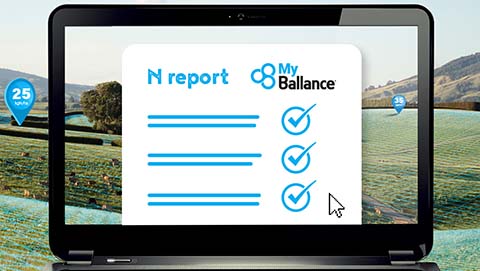We’re here to help you meet the new guidelines
It’s important for all farmers to understand the Essential Freshwater Policy and what it means for you. We’re here to help you navigate these rules, by supporting on-farm innovation with clever science and world-leading tools. Together, we will continue to help improve water quality across New Zealand.
What effects will this have on-farm?
We’ve summarised the main points in this easy guide - read on to get an overview of how the new policy applies to you. On the right you’ll find links to read the full policy documents.
Nitrogen fertiliser cap
![]()
![]()
Intensive winter grazing
![]()
Areas used for intensive winter grazing from November 2022 onwards must comply with a series of default conditions described below. If conditions for the cropped area cannot be met, you will need to obtain a certified freshwater farm plan to demonstrate intensive winter grazing is being well managed. If your farm does not have a certified freshwater farm plan, then a resource consent may be required.
Intensive winter grazing includes any annual forage crop grazed by livestock between 1 May and 30 September.
The current proposed conditions for intensive winter grazing include:
Size
The cropped area is no greater than 50 ha or 10% of the total property area, whichever is greater. It must also be no greater than the largest total area used of intensive winter grazing in any single year between 2014-2019.
Slope
The maximum slope over any 20 m distance in the cropped area used for intensive winter grazing must be 10 degrees or less.
Pugging
Farmers should take all reasonably practical steps to minimise the effects of pugging in cropped areas.
Livestock exclusion
All livestock must be kept more than 5m away from all waterways (including rivers, lakes, wetlands and drains), regardless of whether water is flowing.
Replanting
Farmers should aim to resow vegetation as ground cover as soon as practicable after grazing after livestock have finished grazing.
Critical source areas
Critical source areas that are within or adjacent to any area used for intensive winter grazing must remain un-grazed, have vegetation cover maintained, and remain uncultivated or harvested of annual forage crops.
Intensification and land use
![]()
Converting more than 10ha of land to a more intensive use now requires resource consent. This applies to plantation forestry to pastoral, pastoral to dairy, or increasing the irrigated area in a dairy system. There are also restrictions around increasing dairy support land area.
Stock exclusion
![]()
Note - this does not apply to sheep
![]()
Wetland management
![]()
Disturbance of wetlands (i.e. earthworks, vegetation clearance) is only permitted for certain reasons (e.g. restoration, scientific research, and clearing debris). Councils must receive at least 10 days' notice of these activities, and may require consent
Feedlots and stock holding areas
From winter 2021, feedlots will need to meet minimum standards for permeability, effluent management, and proximity to waterbodies.
Water takes
From 03 September 2022, irrigation consent holders who take more than 20 litres of water per second must:
- Measure water use every 15 minutes
- Electronically submit records to council every day.
This applies to takes more than 10 litres of water per second from 2024 and more thank 5 litres of water per second from 2026.

The easiest way to report your nitrogen use is through your MyBallance account using our Nitrogen limit management feature. Learn more about the reporting requirements and the new feature here.
Click here for our overview document.
Key documents
These are listed below and took effect on 3 September 2020:
- National Policy Statement for Freshwater Management (NPS-FM 2020)
- National Environmental Standards for Freshwater (NES-FW)
- Resource Management (Stock Exclusion) Regulations 2020
- Resource Management (Measurement and Reporting of water Takes) Regulations 2010
For more information
To discuss the specific requirements for your farm, contact your local Regional Council.
For industry information on the policy, contact Beef & Lamb, DairyNZ, Deer lndustry NZ, HortNZ.
Contact your local Ballance Nutrient Specialist or one of our Farm Sustainability Services team. Alternatively, contact our Customer Services team on 0800 222 090.